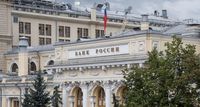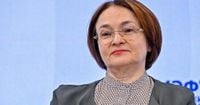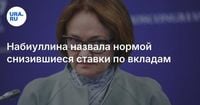On March 21, 2025, Elvira Nabiullina, the Head of the Central Bank of the Russian Federation, announced that the Central Bank would maintain the key interest rate at 21% per annum. This decision reflects ongoing efforts to manage inflationary pressures while ensuring stable economic development.
Nabiullina emphasized the Bank's commitment to making decisions regarding the key rate independently, stating, "The Central Bank makes decisions on the key rate independently, but we are in constant contact with the government." This collaboration focuses on achieving sustainable economic growth and improving the well-being of the Russian populace.
During the press conference, Nabiullina discussed the rationale behind the Central Bank's monetary policy, which aims to regulate demand to align with the economy's production capacities. She noted the necessity of preventing accelerated price growth by managing the demand-supply equilibrium. "We see that currently, demand has outpaced supply potential, and we must slow it down so that the supply of goods and services can catch up with this demand," she remarked.
The current economic landscape indicates that inflation, which stands at 10.2%, is projected to decline to between 7% and 8% within the year, aided by proactive monetary policies. However, Nabiullina warned that if the pace of disinflation is insufficient to achieve the target inflation rate of 4% by 2026, the Central Bank may consider raising the key rate in the future. "We will consider raising the key rate if the disinflation dynamics do not ensure the achievement of the target," she stated.
The stabilization of the economic environment is further highlighted by the recent reduction of deposit rates to below the key interest rate, a move that Nabiullina interpreted as a sign of normalization in the financial sector. "The current reduction in deposit rates to a level below the key rate indicates a normalization of the situation," she explained. She further elaborated that previously, banks had increased deposit rates in anticipation of a potential hike in the key rate, resulting in atypical situations where deposit rates exceeded the key rate.
Nabiullina pointed out that tightening macro-prudential policies also played a role in elevated deposit interest rates but that the Central Bank has since adjusted liquidity ratio compliance schedules for banks, contributing to the observed stabilization.
As the Central Bank continues to navigate these economic challenges, it remains aware of the delicate balance between stimulating growth and controlling inflation. Nabiullina highlighted that the government is actively implementing various measures to support key industries through budgetary incentives and reducing administrative barriers, reinforcing the partnership between the Central Bank and government in achieving national development objectives.
Interest in annual deposits has reportedly stabilized in recent months, with demand consistently reflecting around 15% of total deposits in January and February. The Bank of Russia's commitment to analyzing the speed and reliability of inflation reduction remains a priority. As noted by Nabiullina, if the dynamics of inflation do not align with expectations, future monetary policy adjustments could be on the table, with the next meeting scheduled for April 25, 2025.
In summary, as the Bank of Russia holds the key interest rate steady amid ongoing economic evaluation and potential inflationary pressures, the dialogues between the Central Bank and government underscore a unified approach to fostering sustainable growth while effectively managing inflation. Nabiullina's insights reflect the nuances of navigating a complex economic landscape, balancing immediate needs with long-term objectives.






